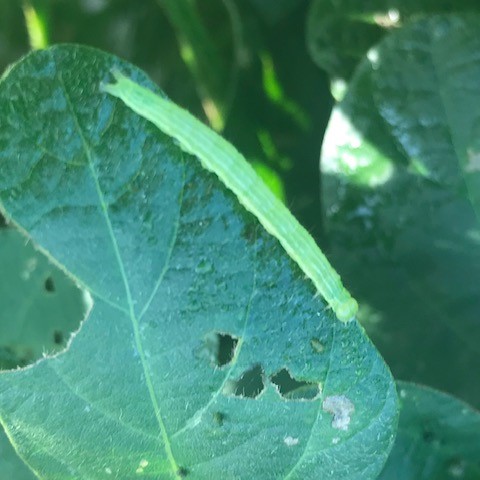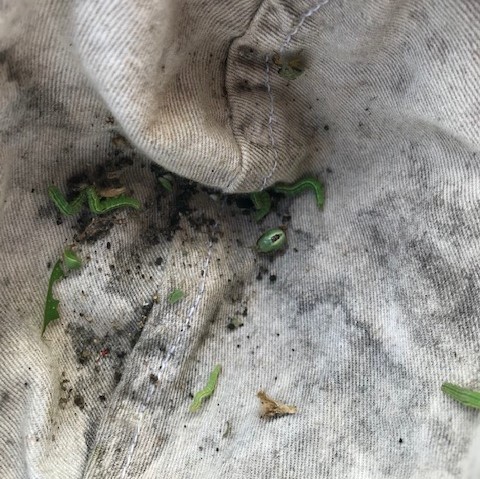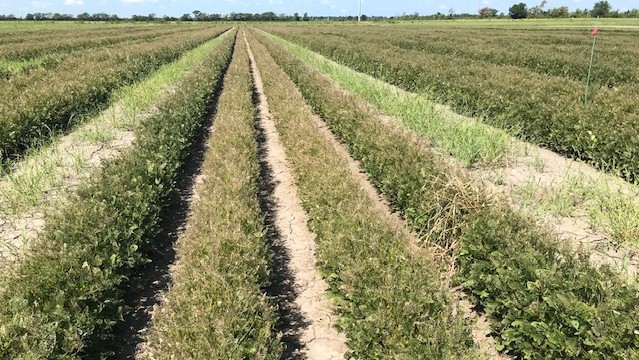
By: Dr. M.O. Way, Prof. of Entomology, Texas AgriLife Research and Extension Center
I know some of you rice farmers also grow soybeans which can be an excellent choice for rotation with rice. I also know soybeans can be a risky crop for Southeast Texas farmers. Our unpredictable weather (sometimes heavy rains at planting and near harvest and drought conditions during podfill) frequently is not conducive to soybean production. But this year, at least east of Houston, weather has so far cooperated. That being said, one of my responsibilities as an entomologist in Southeast Texas is to provide management guidelines for insects attacking soybeans. This year, my project is evaluating novel insecticides for control of the array of insects damaging soybeans. I scout my plots for insects and then apply treatments when populations reach a certain threshold. I emphasize “scout” which is crucial to successful soybean production in Southeast Texas. Our warm, humid climate and long growing season are perfect for rapid build-up of pest populations. Case in point occurred this year in my soybean research plots. Soybeans were R4 (very susceptible stage to insect attack) when I began collecting by sweep net a few Lepidoptera larvae…mainly green cloverworm. At this time, defoliation was probably no more than 1-5%...no big deal. But within a matter of days, populations skyrocketed resulting in close to 20% defoliation which triggered application of the treatment insecticides. My research plots are in a 4-acre field of CZ6020X soybeans. The untreated research plots and the rest of the soybean field are completely defoliated now. Many years ago, I inspected a field of soybeans in Jefferson Co. The crop had good yield potential, but the farmer went on a short fishing trip in September when defoliator densities increased explosively resulting in “soybean sticks” with no foliage upon his return. The soybeans were at podfill when the attack occurred, so the farmer lost his entire crop…pods did not fill.
So, the take home message: scout your crop (rice, soybeans, sorghum etc.) frequently and thoroughly because insect populations can increase quickly in Southeast Texas. I know you farmers are up to your necks in daily farming operations. This is where a private crop consultant can take the guesswork and worry off your shoulders…
Here is the link to a bulletin Managing Soybean Insects in Texas https://extensionentomology.tamu.edu/files/2017/06/J35419-TAMU-Managing-Soybean-Insects-1.pdf


